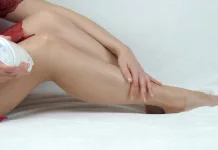
First Published: 25th September 2023, written by Olivia Doonan | Last Updated on 6th April 2024 | Reviewed and Edited by Chloe Safilo
Face exfoliants of the newest generation afford to treat the skin without rubbing. They are delicate and provide skin with purifying, exfoliating and moisturizing effects. Quality products renew and soften skin of all types, purify clogged pores and help avoid blemishes. Face exfoliators prime your skin for applying other beauty products and make-up.
You can find best face exfoliant in UK in the online concept store Dermoi. Dermatologically recommended exfoliants help naturally shed dead cells. It’s especially important when aging processes begins. If dead cells are accumulated on skin surface, it can end in complexion concerns: flaky patches, noticeable fine lines and more. Dermoi sells only products that are clinically tested and actually proven to work.
Types of exfoliants
Our skin is constantly regenerating itself. But not all dead cells can be totally removed in a natural way. So, facial scrub exfoliants help finish the process. They are divided into two types:
- physical, that use organic particles for mechanical peeling;
- chemical, based on acids or enzymes that dissolve the skin oil holding dead cells.
Dermatologists recommend to use gentle chemical exfoliants for dry, sensitive or acne-prone skin. Such products don’t require scrubbing. They work due to penetrating of active ingredients. Physical exfoliants are good for oily skin. But in general, chemical products are more gentle exfoliants than physical.

Why your skin needs exfoliation
Depending on skin type, you can use exfoliants 1-3 times a week. People with sensitive skin can exfoliate once a week or even skip sometimes the procedure. For oily skin it’s acceptable to use exfoliants 2-3 times a week, for normal or combined skin – two times a week is enough. Be careful with these products if your skin is acne-prone. Using the exfoliants on a regular basis, you will get the following benefits:
- proper blood circulation,
- more naturally collagen synthesized,
- increased cells turnover,
- less breakouts,
- reduced pores size,
- the skin toned up.
How to exfoliate your face
Exfoliating is a skincare technique. It requires following the recommended regimen and rules of safety. Pay attention that using a proper product in a wrong way can deliver poor results. Not suitable type of exfoliant cause micro-tears. So, it’s better use dermatologically recommended products for your skin condition.
Choose the type of the product according to your skin condition and concerns. If it’s a chemical product, apply it gently using circular motions for about 30 seconds. If it’s a mechanic exfoliant, use short light strokes. Follow the procedure with moisturizer. Skip procedures every time you have inflammations, any cuts, wounds or your skin is sunburned.
Face exfoliant vs exfoliator
Exfoliator and exfoliant are two terms used interchangeably to refer to a product or substance that helps remove dead skin cells from the surface of the skin. .
An exfoliator or exfoliant can come in various forms such as scrubs, brushes, sponges, or chemical peels. These products typically contain ingredients that help slough off dead skin cells, unclog pores, and promote a smoother, brighter complexion.
Exfoliating facials can be done at home or at a spa or salon, and typically include a combination of physical or chemical exfoliants, such as scrubs, masks, or peels.





















































